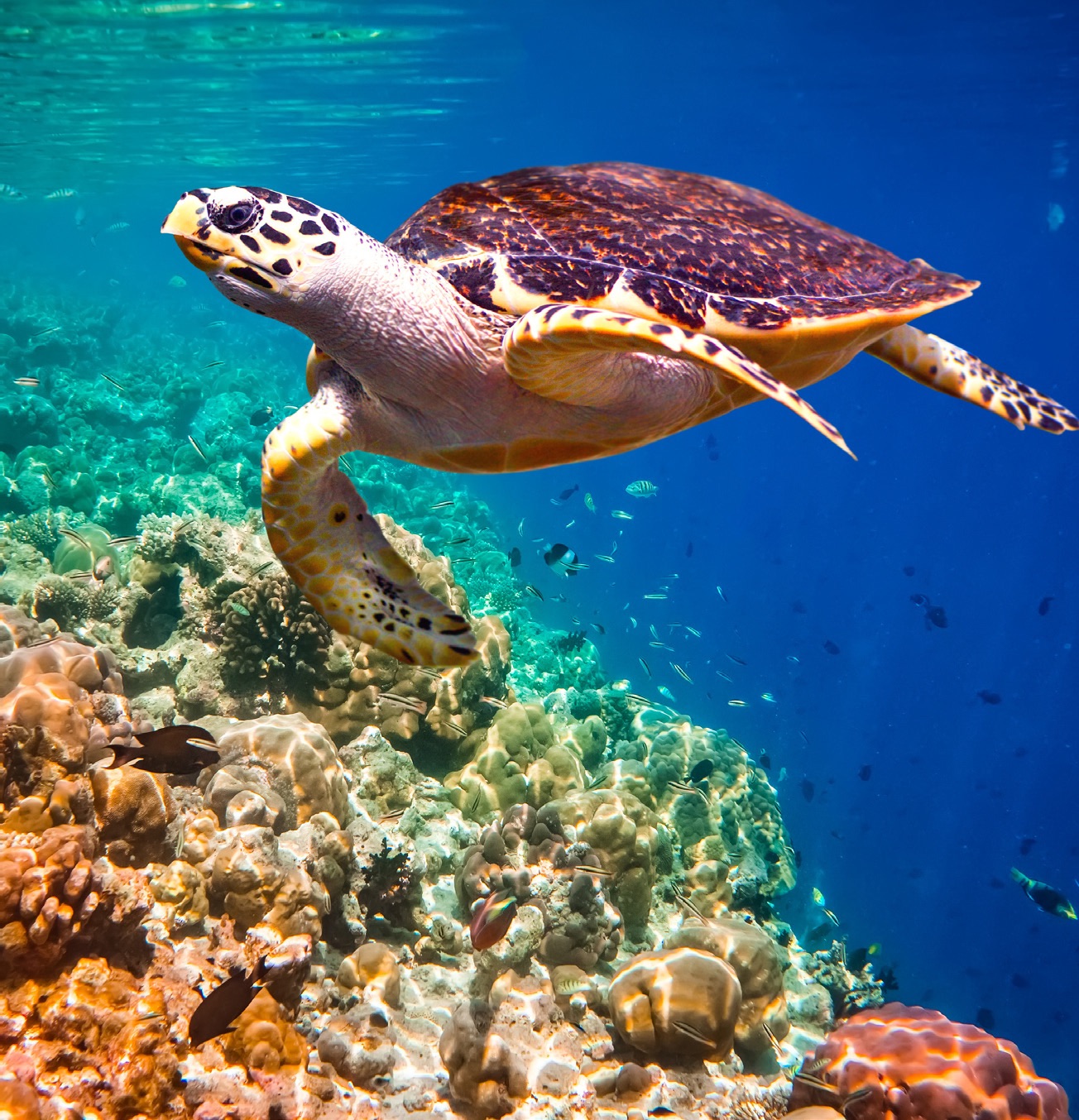Microplastics
Don Smolenski, Contributing Editor | TLT Machinery June 2022
These tiny fibers, fragments and microbeads may have huge environmental and health impacts.

About 300 million tons of plastic is produced every year, but it’s speculated that much of that plastic might be eaten by sea creatures.
There has been considerable (and much needed!) attention to the problem of plastic refuse contaminating the oceans. A subset of this problem, which generally gets less attention, but is no less serious, is microplastics contamination. Microplastics are plastic pieces less than 5 mm in size. Scientists found microplastic particles in the guts of 102 turtles from all seven marine turtle species in the Atlantic Ocean, Pacific Ocean and Mediterranean Sea.
1 The plastics consisted of fibers, fragments and microbeads, and were comprised of thermoplastics, elastomers and synthetic regenerated cellulose. They likely resulted from turtles’ ingestion of seawater, sediments and/or prey. These microplastics might have originated from exfoliants in cosmetics, pre-production plastic pellets, tire wear, biomedical applications, particles from clothing, marine fluids and lubricants and other sources.
Researchers from the University of Plymouth exposed scallops to concentrations of plastic nanoparticles similar to those found in the marine environment.
2 Billions of 250 nanometer (nm) particles had spread through the scallops’ intestines in only six hours, and many more 20 nm particles were found in the mollusks’ kidneys, gills and muscles. This underscores the concern that microplastics in the oceans likely have moved up the food chain to larger marine life, eventually ending up in humans.
National Geographic reported that 3,400 microplastic pieces were found in a liter of water from the Arctic Greenland Sea, at more than 18,000 feet deep.
3 Chinese researchers had analyzed water samples and found about four cups of microplastic in a liter of water in the trench’s most polluted regions.
4 Most of the oceans’ plastic is not easily accounted for.
5 About 300 million tons of plastic is produced every year, but it’s speculated that much of that plastic might be eaten by sea creatures. Small pieces of microplastic that are covered in biofilm (thin layers of zooplankton, bacteria and other small organisms) also eventually sink to the bottom of the ocean and end up in deep sea fish.
So, what does this ultimately have to do with lubricants? It’s something that tribologists clearly need to be mindful of when developing nanolubricants, especially for environmentally sensitive applications. Because of their extremely small size, nanolubricants could more easily be released into the environment.
REFERENCES
1.
Duncan, E. M., Broderick, A. C., Fuller, W. J., et al. (2019), “Microplastic ingestion ubiquitous in marine turtles,”
Glob Change Biol, 25, pp. 744-752. Available
here.
2.
Al-Sid-Cheikh, M., Rowland, S. J., Stevenson, K., Rouleau, C., Henry, T. B., Thompson, R. C. (2018), “Uptake, whole-body distribution, and depuration of nanoplastics by the scallop
pecten maximus at environmentally realistic concentrations,”
Environ. Sci. Technol., 52 (24), pp. 14480-14486. Available
here.
3.
Gibbens, S. (2018), “Microplastics found to permeate the ocean’s deepest points,”
National Geographic. Available
here.
4.
Peng, X., Chen, M., Chen, S., Dasgupta, S., Xu, H., Ta, K., Du, M., Li, J., Guo, Z., Bai, S. (2018), “Microplastics contaminate the deepest part of the world’s ocean,”
Geochem. Persp. Let., 9, pp. 1-5.
5.
“Marine Plastics Pollution,” IUCN. Available at
here.
Don Smolenski is president of his own consultancy, Strategic Management of Oil, LLC, in St. Clair Shores, Mich. You can reach him at donald.smolenski@gmail.com.